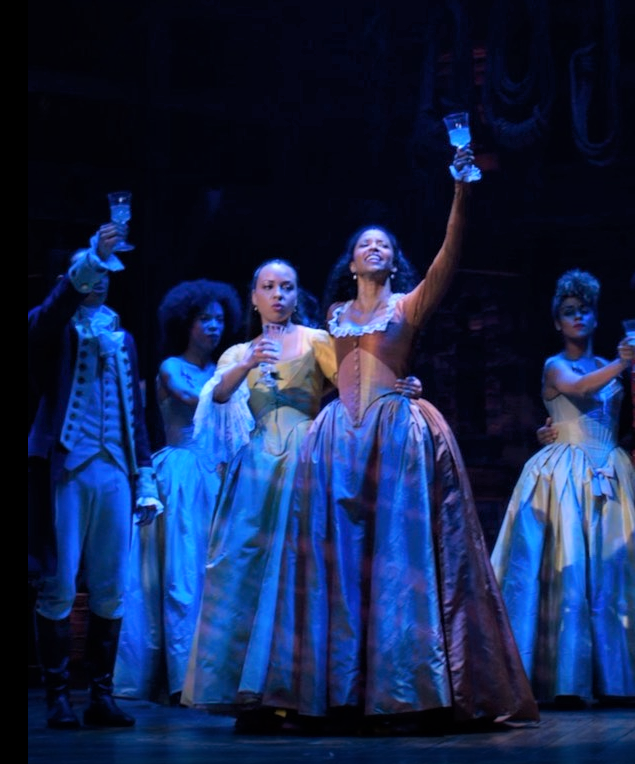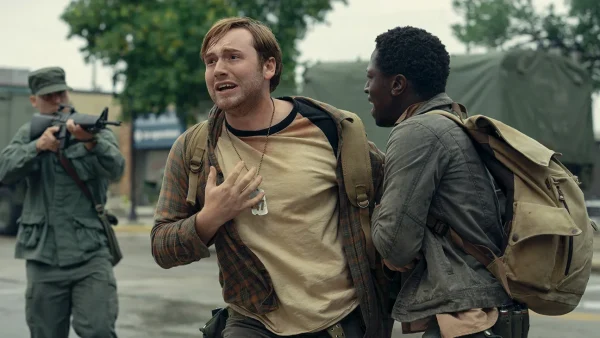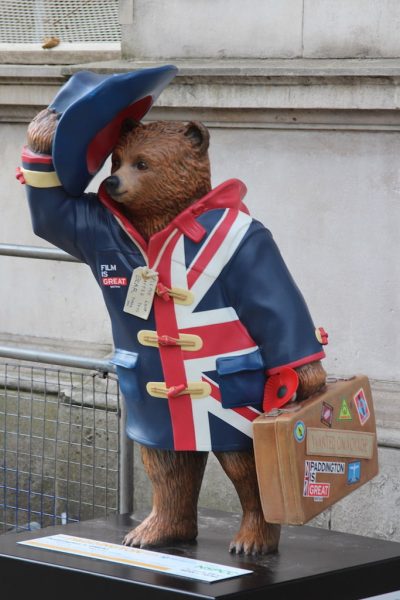A look into the excitement and controversy surrounding the “Hamilton” film
July 25, 2020
In March, The Pace Press reported on the hit musical “Hamilton” heading to big screens in 2021. In an exciting turn of events, the show’s creator, Lin-Manuel Miranda, announced “Hamilton” would stream on Disney+ starting July 3, over a year earlier than the expected theatrical release date.
The “Hamilton” film premiered days after the news that all Broadway performances would be cancelled until 2021, a heartbreaking but expected announcement for theatre-lovers and those working in theatre. With this news came discussions about filming live theatre and the idea of more shows following in the production’s footsteps as Broadway theatre is an extremely inaccessible industry for most people, with high ticket prices and transportation being a factor for people outside of NYC.
With most events cancelled or postponed until 2021, the “Hamilton” film was one event that managed to bring together millions of people while also allowing them to social distance with viewing parties. On the day of the film’s release, there was no way to escape the “Hamilton” hype, with all of Twitter’s trending page displaying “Hamilton” hashtags and unavoidable videos of people singing and dancing to the soundtrack.
The film is not a typical recording of a staged show, however; director Tommy Kail undertook the project of making sure there was not a bad seat from home. Unlike any other traditional filming of a stage production, “Hamilton” utilizes multiple camera angles and shots. Some shots needed to be pre-recorded in order to capture moments up close, like George Washington’s first entrance, which stunningly captures Christopher Jackson facing upstage, a view not even a live audience could have seen. The film is riddled with breathtaking shots, capturing the stage from every angle possible, including even some aerial shots. The camera also allows for something audiences in theatres don’t get—close-ups of the actors. These close camera angles allow people to see the casts’ immaculate acting and facial expressions.
The show was filmed in 2016 with the original Broadway cast, arguably one of the most recognizable casts of the past decade. The musical quickly became a phenomenon with ticket prices at astronomical levels (those of which have not dropped much in the past four years).
The original Broadway cast album has been listened to across the world, peaking at number 12 on the Billboard 200 Chart in 2015 upon release and continuing to be on the charts ever since. Lin-Manuel Miranda’s fast-paced lyricism in the show’s legendary raps with some new age pop musical songs perfectly compliment the cast full of stars.
Renée Elise Goldsberry, who plays Angelica Schulyer, won a Tony for her performance and sings one of the most celebrated songs in musical theatre, “Satisfied.” Goldsberry is a force and has an unbreakable voice like none other. She belts and raps through the whirlwind of a song while making audiences feel deeply for the character. The song is iconic not only for the lyrics and Goldsberry’s voice, but for the staging of the scene. “Hamilton” utilizes turntables in the floor in order to keep the set and actors moving throughout the entire show, but in this particular song, the turntables represent a flashback in time. Fans have eagerly awaited seeing the reverse in time, an inventive triumph in scenic design.
Many fans were also looking forward to seeing the incredibly talented Leslie Odom Jr. as Aaron Burr, the man who famously killed Hamilton in a duel. Odom’s voice is clearly fantastic, but the filming of the show allowed people to see his incredible acting skills. He performs huge numbers like “Wait For It” and “The Room Where it Happens” throughout the show making intricate dancing and breathtaking singing look easy. Odom has the power to break audiences’ hearts with his gut-wrenching performance of Burr, consistently giving the world a masterclass in acting during the entirety of the show.
The entire cast including Phillipa Soo, Christopher Jackson, Jasmine Cephas-Jones, Okieriete Onaodowan, Anthony Ramos, Daveed Diggs and Jonathan Groff exhibit the best of Broadway—a multifaceted powerhouse of a cast. The musical’s ensemble was wonderfully highlighted throughout the filming of the show. The ensemble is always engaged, and throughout “Hamilton,” it’s easy to get sucked into the stories the ensemble creates for the background characters.
One of the most striking examples of this (that many people were able to notice thanks to the film) was Ariana DeBose, an ensemble member with an incredible arc. While watching, you can see her portray “The Bullet,” an allegory for the death surrounding and chasing Hamilton. DeBose beautifully portrays a subtle motif that recurs often and could be missed from viewing in the theatre—she can often be seen in the background, alluding to the deaths in the show.
Watching the final duel between Burr and Hamilton is shocking because of the beautiful recurrence of the bullet (DeBose) who has missed Hamilton throughout the show, and finally makes her way towards him.
The ensemble is also highlighted in the end credits of the film which display portraits of actors with their character names– not only the principal roles of the show, but each and every actor is given recognition. This is a wonderful move in an industry that doesn’t normally highlight the ensemble in such a way.
Watching “Hamilton” is almost like being in a theatre, with a one-minute intermission between the acts, adding to the experience. The show also begins with King George asking audiences to turn off their cellphones, a familiar warning for theatre-goers.
Long-time fan and University junior Kennedy Robinson said, “The early release was unexpected but pretty welcome. Not only because it gave us ‘Hamilton’ fans something to look forward to during the monotonous COVID-19-induced quarantine but also amidst the current racial tensions and injustices we are seeing highlighted currently. It was amazing to see people of color (especially Black people) being not only represented in a positive light but also being celebrated.”
The “Hamilton” film has come out in a time where the overall national mood is much different than that of 2015 and early 2016. As it brings a wider audience, and with filming that allows for a closer look at the musical, “Hamilton,” has become a source of controversy amid other political and human-rights issues in America.
Protests and calls to action for racial justice and equality led by the Black Lives Matter Movement are not ceasing in the United States anytime soon, and with the racially charged history of the country’s founding, it’s not surprising that people would bring up the pieces of the musical that are not historically correct or those that were omitted. This is not the first time people have called out the musical for its inaccuracies; from the start, people have called out Miranda for creating a musical about men that enslaved people and were problematic in many different ways.
Additionally, “Hamilton” is known for casting actors of color for almost every single part in the show. Although these characters were all historically white, Miranda decided to cast whomever he felt fit the role. This show broadened inclusivity in theatre, a predominantly white industry, and has allowed opportunities for actors across the country in Broadway and tour performances. However, the fact that Black men and women are playing slave owners has been a source of internal conflict for many members of the cast—the most outward about his experience being Christopher Jackson.
Jackson, who plays George Washington, has spoken about his struggle playing Washington knowing that he owned enslaved people. Jackson toured Washington’s Mount Vernon Slave Quarters while grappling with the moral dilemma of portraying him. After the tour, he stated, “I felt it necessary to honor those who never had a name, who never had a story told about them.” He continued, “Every aspect of my performance involved them as well.”
In 2016, the actor interviewed with Vanity Fair about his friendship with Lin-Manuel Miranda, his career and how he was able to play Washington. Jackson told the magazine, “It’s something I spent a lot of time and a lot of angst trying to figure out how I reconcile being in this man’s skin. As a Black man, I just couldn’t put it together.”
Part of the controversies surrounding “Hamilton” involves the portrayal of historical figures as being against slavery. Throughout the first act, Hamilton and his friends John Laurens, Marquis de Lafayette and Hercules Mulligan talk somewhat about their disdain for slavery, although slavery is not a topic that is often at the forefront of the musical.
In the song, “My Shot,” Hamilton sings, “A bunch of revolutionary manumission abolitionists,” referring to himself and his friends, which is not exactly the case. While it is not known if Hamilton himself owned enslaved people, he frequently dealt with the business of trading enslaved people and married into a family of slave owners.
John Laurens, however, was historically an abolitionist and did not believe America could truly be a republic while using slave labor, which Miranda showcased often through Laurens’ verses. Another lyric from “My Shot” lays out Laurens’ thinking; “We’ll never be truly free / until those in bondage have the same rights as you and me / you and I / do or die/ wait till I sally in / on a stallion with the first Black battalion.” This in itself is another issue though—the musical brings up slavery sparingly, and when it does it tends to be in an effort to make the main characters look good.
University junior and English major Esther Sutton said “White people often look to people of color to educate them and when they see things that have representation they think it must be politically correct, and since it’s cool and theatre, it must be fact. This is the first time I’ve experienced people ‘stanning’ a musical—following the cast and being obsessed with them.”
“It’s good that these actors have gotten more recognition but using Black actors to push your narrative of American nationalism is problematic. We have to talk about how many times the founding fathers wanting to end slavery is mentioned, which is simply not true, to make the consumer feel better about watching slave owners on stage. It is not the job of people of color to make white people feel good about consuming this type of media. It is such a great musical so it’s a shame that it is about something so controversial,” Sutton added.
They continued, speaking on the desire for musicals to be filmed, “We should proshot more musicals, but it’s hard to do if you’re not ‘Hamilton,’ because you don’t have people lining up to film your musical. I was in the city when the filming happened, and you could just see tons of equipment coming out of the theatre and not a lot of shows have the resources to do a proshot.”
Twitter users have taken a look into the musical and its dealing with slavery, as fans and critics watched intently—some for the first time. Something many fans are citing as one of the examples of how “Hamilton” downplays slavery, is at the beginning of act two when Thomas Jefferson, known for being a slave owner and often called out for it in the play, speaks to a woman he refers to as “Sally.” In an extremely controversial oversight by Miranda, Jefferson off-handedly hands the woman a letter while dancing around the stage singing: “Sally be a lamb darling, won’t you open it?” and continues dancing around after dismissing her.
Sally Hemings was enslaved by Jefferson and it is likely that he was the father of her six children. There is little known about Jefferson and Heming’s relationship, but it is said that they met while Jefferson was in Paris where slavery was not legal. Eventually, Hemings came back to Virginia with Jefferson where he legally owned her.
The off-handed treatment of the situation has been a source of criticism against the musical. Lin-Manuel Miranda took to Twitter (which was buzzing with hashtags to cancel “Hamilton”) to respond to the controversies. He wrote: “All the criticisms are valid. The sheer tonnage of complexities & failings of these people I couldn’t get. Or wrestled with but cut. I took 6 years and fit as much as I could in a 2.5 hour musical. Did my best. It’s all fair game.”
While watching “Hamilton,” it’s important to remember that while some of it is historically accurate, it is still a stylized and dramatized piece of art. The musical is by no means a history lesson. The characters in the show, although based on real people, are often given personality from Miranda because after all, they are characters.
Although there are many historical critiques to be found, no one can deny the power of this musical. A musical moreover, about loyalty, love and legacy. A musical asking the question: “Who lives, who dies, who tells your story?”
“Hamilton” has brought people together unlike anything else ever has, the reach it has had and the number of people inspired by the work is insurmountable. The sheer power of Miranda’s lyricism created a musical that made history and changed the Broadway theatre industry, turning the inaccessible, predominantly white world of Broadway upside down.













